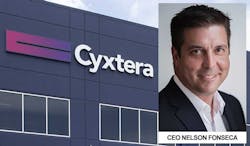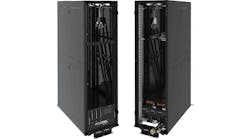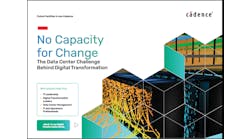SPAC Route Accelerates Cyxtera’s Path to Public Markets, Global Growth
The emergence of special purpose acquisition corporations (SPACs) could provide a quicker route to the public securities markets for privately-held companies in the digital infrastructure sector. That’s the main early takeaway from the acquisition of colocation specialist Cyxtera by a SPAC controlled by investor Starboard Value.
The acquisition by Starboard Value Acquisition Corp. (SVAC), which values Cyxtera at $3.4 billion, follows the creation of multiple SPACs targeting the data center industry. SVAC will invest $654 million into the new Cyxtera, which will become a public company on the NASDAQ exchange.
It’s the second SPAC deal targeting the data center opportunity, as Vertiv went public in 2020 when it was acquired by GS Acquisition Holdings, a SPAC created by Goldman Sachs and executive David Cote.
A SPAC is an investment vehicle that goes public and raises capital from investors for the purpose of acquiring a private company. Some analysts see selling to SPACs as a faster and more efficient path to the public markets than a traditional IPO.
“We always wanted and expected to be a public company, because of the scale of our platform,” Cyxtera CEO Nelson Fonseca said in an interview with Data Center Frontier. “We were on the path to an IPO later this year, but Starboard’s interest accelerated our ability to go public. We found a great partner.”
Cyxtera has 61 data centers spanning 1.9 million square feet in 29 markets around the world and more than 2,300 enterprise customers. As one of the largest private data center operators, Cyxtera was an obvious candidate for an acquirer seeking to gain traction quickly in the data center sector.
Other privately held companies may find a similar opportunity. The Cyxtera deal is the first in a likely series of transactions in which SPACs seek business combinations with data center companies. It also reflects DCF’s forecast that 2021 would be a year of major data center M&A. Recent news reports indicate there are several new SPACs featuring teams of executives with lengthy history in the data center sector:
- Former CyrusOne CTO Kevin Timmons has joined the management team at InterPrivate Acquisition Partners, which Bloomberg reports is planning a SPAC targeting digital infrastructure. Former CyrusOne CEO Gary Wojtaszek and data center design pioneer Peter Gross are also working with InterPrivate as advisors.
- Michael Tobin, a serial entrepreneur in the data center sector, is reportedly working with an Amsterdam SPAC called Crystal Peak, Tobin is best known for his leadership of TelecityGroup, which was acquired by Equinix.
The Cyxtera transaction offers some insights into how SPAC acquisitions can offer an exit opportunity and growth path for digital infrastructure companies.
Cyxtera’s Journey
Cyxtera Technologies was formed in 2016 when Medina Capital – led by former Terremark CEO Manual Medina – teamed with investors including BC Partners to buy the data center portfolio of CenturyLink for $2.15 billion. It was one of several data center players seeking to build a colocation business atop a portfolio of data centers spun off by telecom companies. These “carve outs” can be challenging, and take several years to complete.
“Right after the acquisition in 2017, we immediately began the process of standing up brand new systems from the ground up – including CRM, ERP, and others,” said Medina, the Executive Chairman of Cyxtera. “These systems were selected with growth in mind and implemented in a way to support a significantly larger company. We made the necessary investments in our facilities to ensure that they remain competitive with the other market leaders.”
“We had the opportunity at SVAC to look at hundreds of potential target companies, and it quickly became clear to us that Cyxtera was the most exciting opportunity for SVAC and the one where we at Starboard wanted to have our capital invested,” said Jeff Smith, Chair of SVAC and CEO of Starboard Value. “We’re actually investing in Cyxtera a few years after the carve-out, after all the heavy lifting and the hard work has been done by this terrific management team.”
Smith says Cyxtera is at an “inflection point” with upside opportunities in both organic growth and acquisitions. SVAC liked Cyxtera’s concentration of blue-chip customers, which represent a bet on the future of cloud services, with 56 percent of revenue from customers providing cloud, IT and network services. Most of Cyxtera’s infrastructure spending is success-based with 70 percent of capital expenditures supporting expansion and installation of services for existing customers.
The key to organic revenue growth will be filling Cyxtera’s data centers, which are currently at 67 percent of capacity. Boosting utilization to 85 percent would bring in an additional $170 million a year in EBITDA.
“We are battle tested, and have a fantastic team,” said Fonseca. “We have a platform we can continue to expand and succeed which now has 40,000 cross connects. Right now, the innovation is all around making our data centers, easier to consume. We believe the retail sector is the sweet spot and positioned to benefit from the tail winds in the retail space.”
“The public cloud is going to continue to grow, but there are workloads that don’t belong in the public cloud,” he added. “This is why we’re so bullish on retail colocation giving those data centers flexibility and future proofing their solutions.”
Transformation Doesn’t Happen Overnight
Thus far the stock market remains unconvinced, or is at least in “wait and see” mode. Shares of SVAC were trading at $11.15 before the Cyxtera acquisition was announced, and have since declined to $9.98, about where SVAC was priced when it went public as a “blank check” SPAC in November 2020.
By comparison, shares of GS Acquisition Holdings (GSAH) rose by about 20 percent after it announced plans to acquire Vertiv, a long-time player in the data center equipment market. While they operate in different segments of the data center business, there are interesting similarities between Cyxtera and Vertiv, which was also a carve-out play, having been spun out from Emerson Electric in 2015 and acquired by private equity firm Platinum Equity Group.
Vertiv had a rough start in the public markets in February 2020, going public just as the COVID-19 pandemic was beginning to spread. Vertiv (VRT) opened trading at $13 but declined to $7.36 in late March as the pandemic prompted global restrictions on business and social distancing. But Vertiv stock has been on the rise ever since, and currently trades above $20 a share, a healthy return of more than 50 percent for investors in its first year.
Some analysts see the explosion of SPACs as a sign of a frothy market. About 175 SPACs went public in the first two months of 2021, with about $32 billion being raised in February alone. Meanwhile, indexes that track SPACs have declined about 20 percent in value over the past month.
In the data center sector, the initial SPAC deals appear focused on long-term growth, with the private equity sellers of Vertiv and Cyxtera retaining equity positions in the new public companies. “We’re all staying in this deal,” said Fonseca.
“We want this to be a material investment for Starboard going forward,” said Smith.
Both Vertiv and Cyxtera see a future in which financial strength helps them expand through acquisitions. Vertiv sees the data center equipment sector as a “fragmented industry with opportunities for bolt-on M&A.” that includes companies and technologies that can extend its current products, as well as technologies like energy storage that could transform the way data centers provision power.
Fonseca and the Cyxtera team believe the SVAC deal will unlock similar growth options.
“Cyxtera is well-positioned to be a successful consolidator because of the global scale of our platform, the software systems we implemented post carve out, and the acquisition and integration experience of our team,” said Fonseca. “We want to grow aggressively in international markets.”






